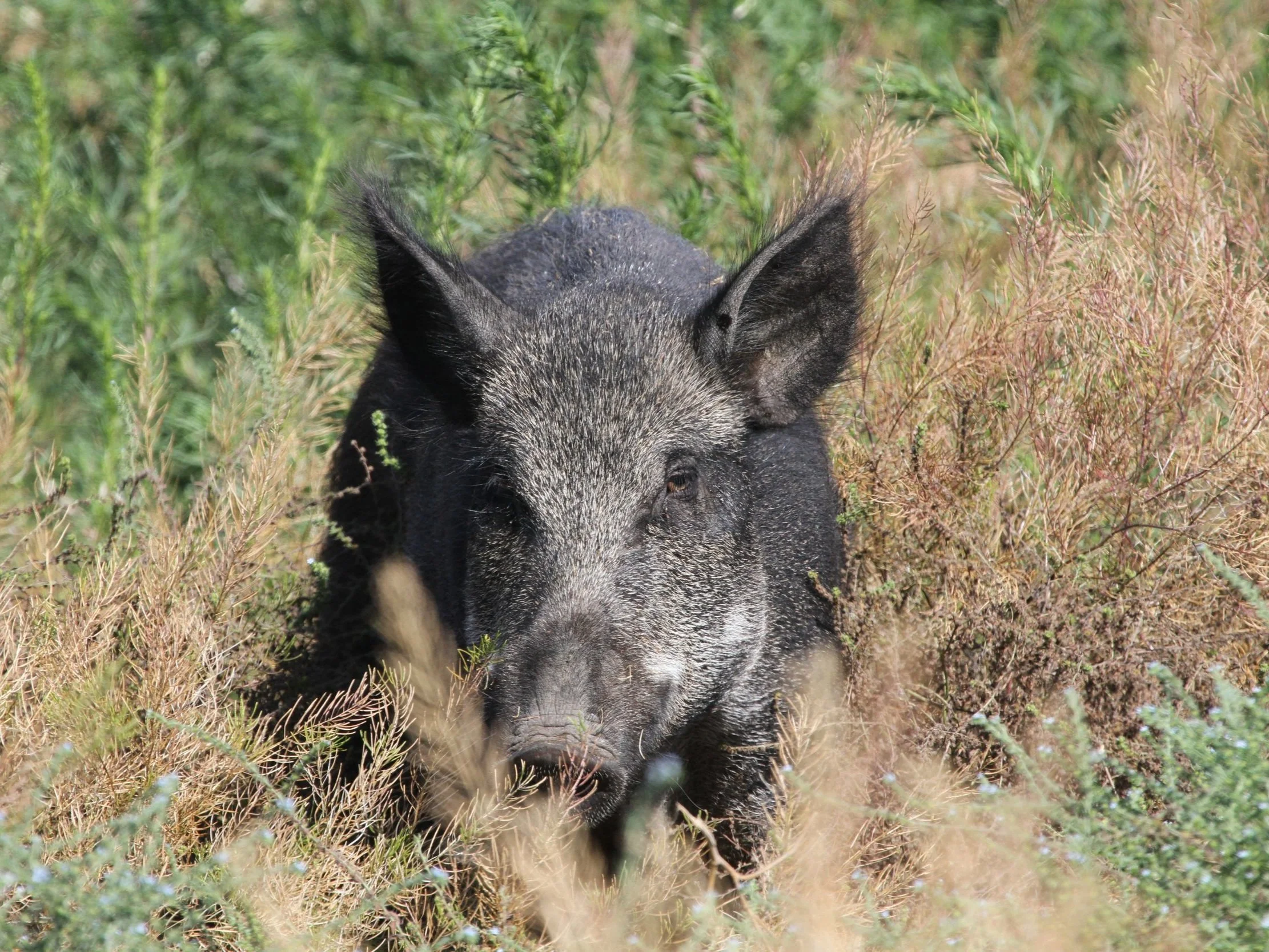
Feral Wild Pigs
If you see a wild pig or have information about a sighting
Call 1-833-PIGSPOT (833-744-7768)
Common Name: feral swine or feral wild boar
Species: sus scrofa
Other names: wild hog, feral pig, wild boar, feral swine/feral wild boar, old world swine, razorback
Origin: Eurasia
What is a wild pig?
The term “wild pig” refers to any pig outside of a fence and includes domestic pigs that have become wild (or ‘feral’) and ownership cannot be determined; Eurasian wild boar, and hybrids of domestic pigs and Eurasian wild boar. It can be difficult to visually distinguish between the three.
Are wild pigs native to Saskatchewan?
No. Wild pigs were introduced across western Canada in the 1980s and 1990’s as part of a broad initiative to diversify agriculture.
How do they survive harsh Canadian prairie winters?
Wild pigs are extremely adaptable to their surroundings. In winter, they rely on nests built of cattails for shelter. They also have long, dark hair and a woolly undercoat that helps them to survive cold winter climates.
What do they eat?
Wild pigs are opportunistic omnivores and eat a variety of plants, roots and animals.
Why are we concerned?
Wild pigs are considered an invasive species. Rooting up the ground causes extensive damage and groups of wild pigs have been known to destroy acres of crop overnight. Wild boar can easily produce up to two litters a year, with four to 12 piglets in each litter. Their numbers continue to grow as they have very few predators.
Wild pigs can carry parasites, viruses or diseases that can be transmitted to domestic livestock, wildlife, and even humans. Specifically, they can be infected with African Swine Fever, Pseudorabies, Swine Brucellosis and the Porcine Reproductive and Respiratory Syndrome Virus. These diseases, if introduced to domestic swine herds, would have a detrimental effect on pig production and result in severe financial losses for Canadian hog producers.
Saskatchewan Feral Wild Boar Control Program
Saskatchewan Crop Insurance Program (SCIC) has an established boar control program in the province. When boar sightings are reported, SCIC helps coordinate with qualified hunters and trappers and landowners within Rural Municipalities (RMs) to investigate reports and take appropriate action and remove the boar.
What to do if you have crop or livestock damage from wild boar? SCIC can provide compensation for any crop or livestock damage caused by the pest.
Find out more here.
How can you help?
If you see a wild pig or have information about a sighting:
Call 1-833-PIGSPOT (833-744-7768)
Note the date, time and location of sightings (intersecting roads, landmarks or GPS coordinates are helpful).
Take pictures or a video, if possible.
Note the number of pigs and whether piglets are present. Let us know if this is an isolated sighting or if it was the same animals spotted multiple times.
You can also contact your nearest Crop Insurance office, call 1-888-935-0000 or report it online on the website.
